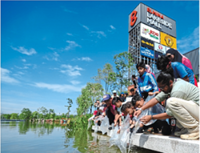Intan says river contamination affects all fish species such as ‘tilapia’ and ‘ikan keli’, not just ‘ikan bandaraya’.
Suckermouth catfish or ikan bandaraya can only be consumed if its habitat is free from pollution.
Otherwise, steer clear, says an expert in native fish species and aquaculture.





